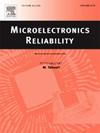YOLO-APGC: A lightweight method for BGA surface defect detection based on cross-scale feature fusion
IF 1.9
4区 工程技术
Q3 ENGINEERING, ELECTRICAL & ELECTRONIC
引用次数: 0
Abstract
Ball Grid Array (BGA) surface defect detection is critical for ensuring the safety and reliability of electronic products. In recent years, numerous deep learning-based BGA surface defect detection algorithms have achieved significant detection performance in this field. However, the computational complexity of existing high-precision models has limited their application in real-time detection on industrial production lines. To address this issue, this paper proposes a lightweight detection architecture based on You Only Look Once v8 (YOLOv8), named YOLO-ADown and Partial Group-shuffle Cross-scale Feature Fusion (YOLO-APGC), which aims to significantly reduce the number of model parameters and computational costs while maintaining high detection accuracy. First, in the feature extraction stage, Adaptive Downsampling (ADown) is introduced, and a novel lightweight Double Partial-Block (PP-Block) module is constructed to synergistically optimize the information retention efficiency and computational cost during the high-dimensional feature compression process. Then, to achieve efficient fusion of multi-scale features, a novel cross-scale dynamic feature fusion network, the Partial Group-shuffle Cross-scale Feature Fusion Network (PG-CCFN), is proposed. Finally, a new BGA dataset is constructed based on industrial scenarios, and a series of experiments are conducted. The results show that the number of parameters in YOLO-APGC is reduced by 68.21 % compared to the baseline model. Additionally, the Giga Floating-point Operations Per Second (GFLOPs) is reduced by 54.32 %, and the Frames Per Second (FPS) is improved by 9.1 %. This model offers a low-cost, highly robust intelligent quality inspection solution for the microelectronics packaging industry, providing significant engineering value in ensuring the long-term reliability of microelectronics packaging.
YOLO-APGC:一种基于跨尺度特征融合的BGA表面缺陷轻量化检测方法
球栅阵列(BGA)表面缺陷检测对于保证电子产品的安全性和可靠性至关重要。近年来,许多基于深度学习的BGA表面缺陷检测算法在该领域取得了显著的检测性能。然而,现有高精度模型的计算复杂度限制了其在工业生产线实时检测中的应用。为了解决这一问题,本文提出了一种基于You Only Look Once v8 (YOLOv8)的轻量级检测架构,命名为yolo - down和Partial Group-shuffle Cross-scale Feature Fusion (YOLO-APGC),旨在显著减少模型参数的数量和计算成本,同时保持较高的检测精度。首先,在特征提取阶段,引入自适应降采样(down - own),构建了一种新型的轻量级双部分块(PP-Block)模块,协同优化高维特征压缩过程中的信息保留效率和计算成本。然后,为了实现多尺度特征的高效融合,提出了一种新的跨尺度动态特征融合网络——部分群洗牌跨尺度特征融合网络(PG-CCFN)。最后,基于工业场景构建了新的BGA数据集,并进行了一系列实验。结果表明,与基线模型相比,YOLO-APGC模型的参数数量减少了68.21%。此外,每秒千兆浮点运算(GFLOPs)降低了54.32%,每秒帧数(FPS)提高了9.1%。该模型为微电子封装行业提供了低成本,高度强大的智能质量检测解决方案,为确保微电子封装的长期可靠性提供了重要的工程价值。
本文章由计算机程序翻译,如有差异,请以英文原文为准。
求助全文
约1分钟内获得全文
求助全文
来源期刊

Microelectronics Reliability
工程技术-工程:电子与电气
CiteScore
3.30
自引率
12.50%
发文量
342
审稿时长
68 days
期刊介绍:
Microelectronics Reliability, is dedicated to disseminating the latest research results and related information on the reliability of microelectronic devices, circuits and systems, from materials, process and manufacturing, to design, testing and operation. The coverage of the journal includes the following topics: measurement, understanding and analysis; evaluation and prediction; modelling and simulation; methodologies and mitigation. Papers which combine reliability with other important areas of microelectronics engineering, such as design, fabrication, integration, testing, and field operation will also be welcome, and practical papers reporting case studies in the field and specific application domains are particularly encouraged.
Most accepted papers will be published as Research Papers, describing significant advances and completed work. Papers reviewing important developing topics of general interest may be accepted for publication as Review Papers. Urgent communications of a more preliminary nature and short reports on completed practical work of current interest may be considered for publication as Research Notes. All contributions are subject to peer review by leading experts in the field.
 求助内容:
求助内容: 应助结果提醒方式:
应助结果提醒方式:


